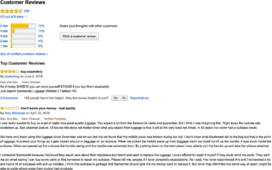Noise is part and parcel of every construction site. From hammering and drilling to trucks backing up, it’s the kind of background sound most workers get used to. But for residents living near a worksite, that same noise can easily become a daily source of frustration. In Singapore, where space is limited and residential areas are often close to ongoing developments, this issue is taken seriously.
That’s where Singapore’s construction noise regulations come in. Enforced by the National Environment Agency (NEA), these rules help maintain a balance between development and liveability. However, for contractors and project managers, understanding and following these regulations can sometimes feel like walking a tightrope. You want to stay compliant without losing time or productivity.
The good news is that it’s possible to do both with the right noise management tools.
Understanding the Basics of Singapore’s Noise Regulations
Before we dive into solutions, it helps to understand the regulations themselves. The NEA sets strict guidelines on when and how much noise construction sites can generate, especially near residential or noise-sensitive areas like hospitals and schools.
For instance, general construction work is typically allowed between 7 a.m. and 7 p.m. on weekdays and Saturdays, but noise limits differ depending on how close the site is to residential properties. Work on Sundays and public holidays is heavily restricted unless special permission is granted.
Non-compliance can result in fines, stop-work orders, and complaints from the public, all of which can affect timelines and budgets. That’s why noise management is a key part of project planning.
Step 1: Conduct a Pre-Construction Noise Assessment
Before breaking ground, take time to assess your site. A noise impact assessment helps identify which activities and equipment are likely to exceed NEA noise limits. This early evaluation lets you plan ahead—scheduling high-noise tasks at less sensitive times and locating machinery strategically.
You can also use this data to communicate with nearby residents or businesses. When people know what to expect, they’re usually more understanding, especially if they see that you’ve made an effort to reduce disruption.
Step 2: Use Construction Sound Barriers to Minimise Noise
One of the most effective and practical ways to comply with NEA noise regulations is by using a construction sound barrier. These barriers act as a physical wall between your site and the surrounding area, helping to contain noise at its source.
Modern construction sound barriers are not the clunky, unattractive panels they once were. Many are lightweight, modular, and weather-resistant, making them easy to install and move as the project progresses. They can be set up around perimeter fences, along scaffolding, or near particularly noisy machinery.
Aside from reducing complaints, these barriers can improve the overall work environment by minimising echo and sound reflection within the site. It’s a small investment that pays off through fewer disruptions, happier neighbours, and a smoother workflow.
Step 3: Maintain Machinery and Use Low-Noise Equipment
Older machines and tools tend to be noisier due to worn-out parts, lack of lubrication, or poor maintenance. Establishing a regular maintenance schedule ensures everything operates as quietly and efficiently as possible.
In addition, consider upgrading to low-noise versions of common tools where possible—many manufacturers now design equipment that meets NEA noise standards while maintaining high performance. Over time, this can make a noticeable difference in keeping your site within acceptable noise levels.
Step 4: Schedule Smartly to Avoid Noise Peaks
Time management plays a big role in noise control. Plan your construction activities so that the loudest tasks happen during permitted hours. For example, you could schedule piling or demolition during mid-morning or early afternoon, when residents are less likely to be disturbed.
This approach not only helps you comply with regulations but also shows consideration for the community. It’s a win-win for both productivity and public relations.
Step 5: Communicate with Stakeholders and the Community
Noise complaints often come from a lack of communication rather than excessive noise itself. Keeping stakeholders informed, especially nearby residents, schools, and offices, can prevent misunderstandings.
Send out short notices before starting particularly noisy phases of construction, and include expected working hours, contact details, and measures being taken to reduce noise. This simple step can build trust and minimise the risk of official complaints.
Step 6: Monitor Noise Levels Throughout the Project
Installing portable noise monitors or hiring specialists to measure sound levels regularly ensures that your site stays within NEA’s permissible limits. Some modern systems even offer real-time monitoring with alerts, allowing you to make quick adjustments before a small issue becomes a bigger problem.
When you show that you’re actively monitoring and maintaining compliance, it reflects professionalism and responsibility—two traits that clients and regulators appreciate.
Step 7: Partner with Experts in Noise Management
Working with partners experienced in acoustic engineering or noise control can make a significant difference. They can provide insights into barrier placement, recommend effective materials, and even help prepare reports for NEA compliance.
Collaborating with professionals who understand Singapore’s noise landscape means fewer risks of fines or delays and more confidence that your project will progress smoothly from start to finish.
Final Thoughts
Complying with Singapore’s construction noise regulations doesn’t have to slow you down. With thoughtful planning, regular monitoring, and effective solutions like a construction sound barrier, you can stay on schedule while maintaining good relationships with the surrounding community.
At the end of the day, managing construction noise isn’t just about following the rules—it’s about building responsibly. A quieter site keeps everyone happy: the team, the neighbours, and the regulators. And when your project runs smoothly without interruptions, that’s when true efficiency shows.






